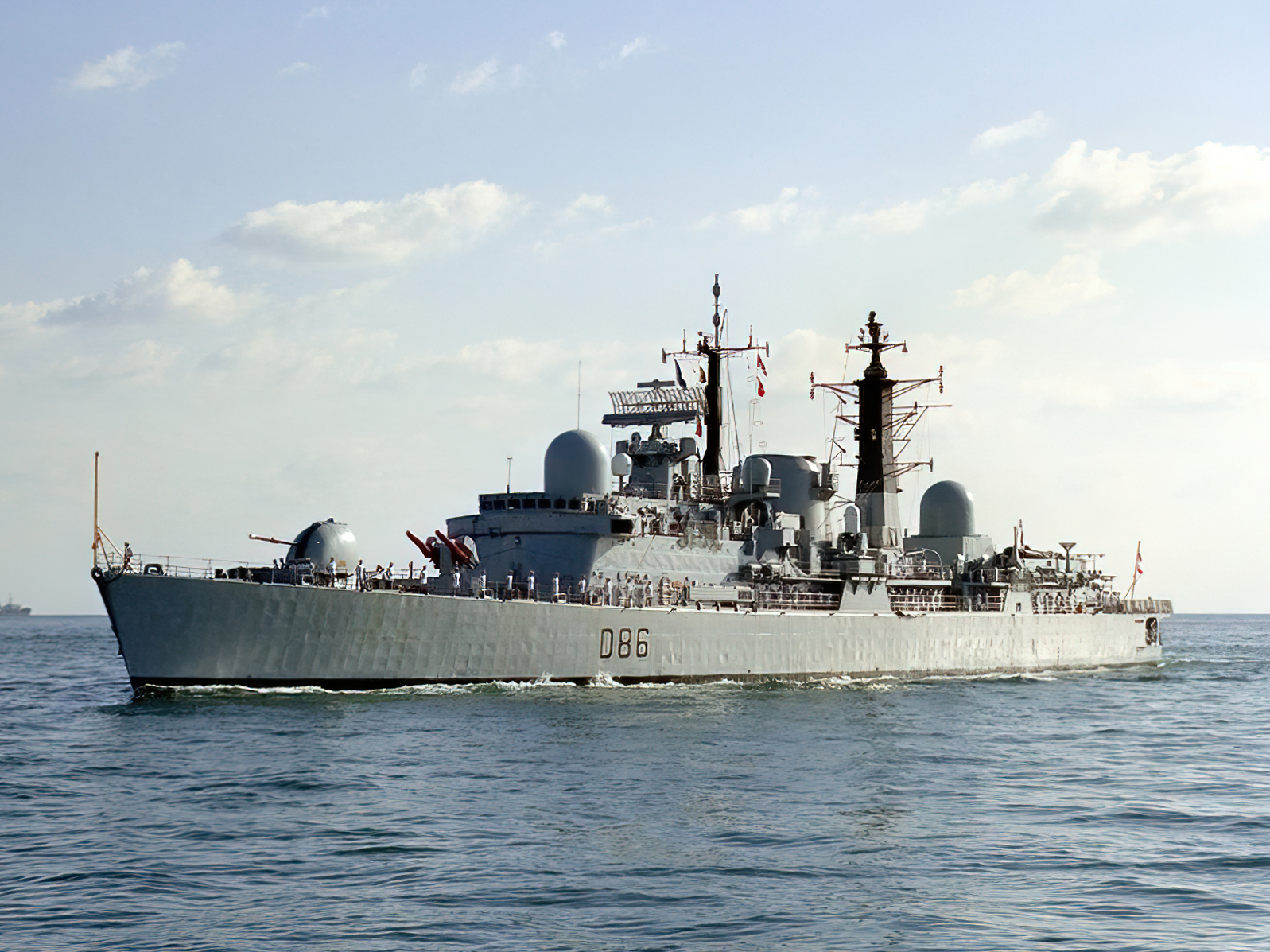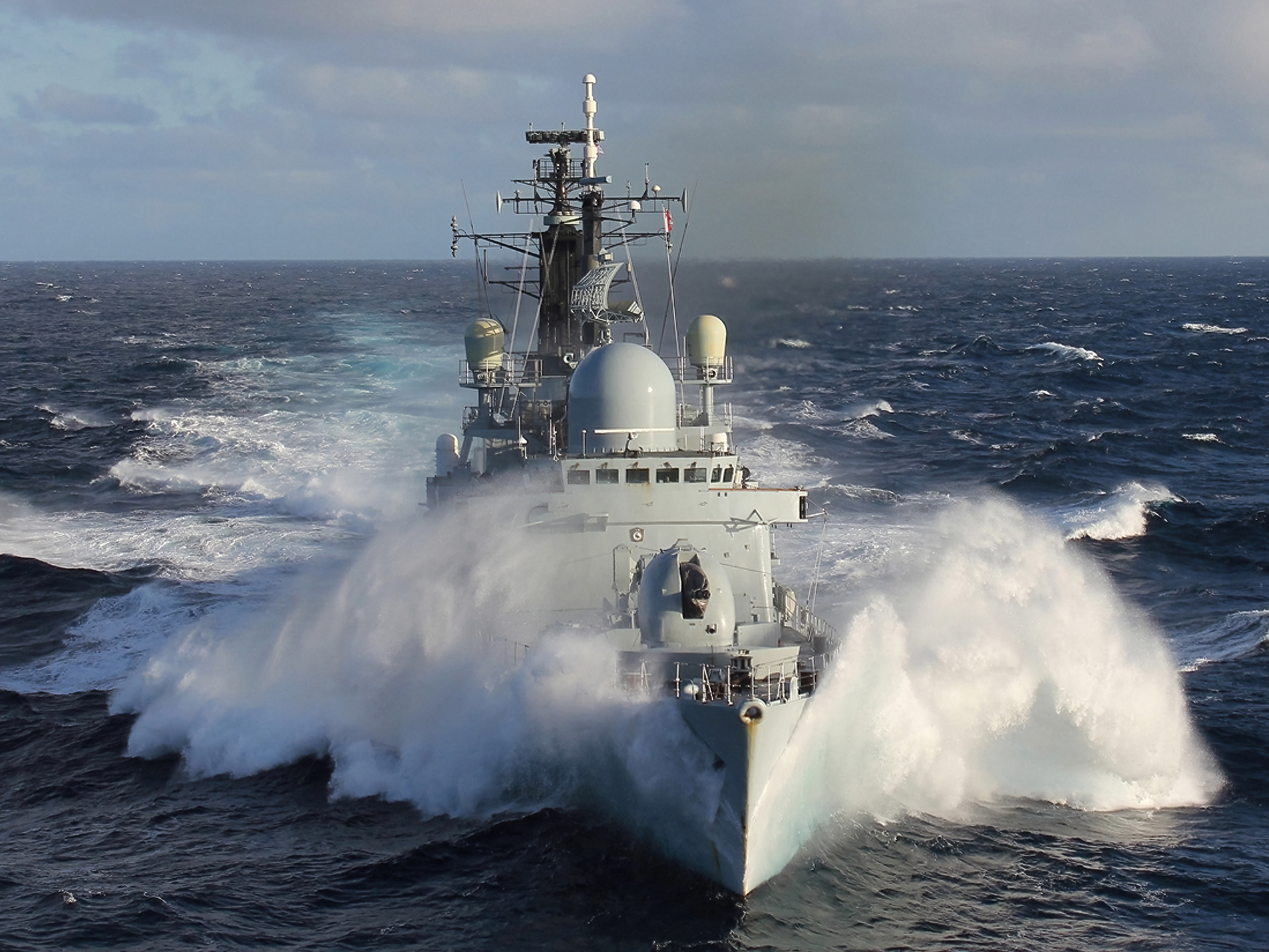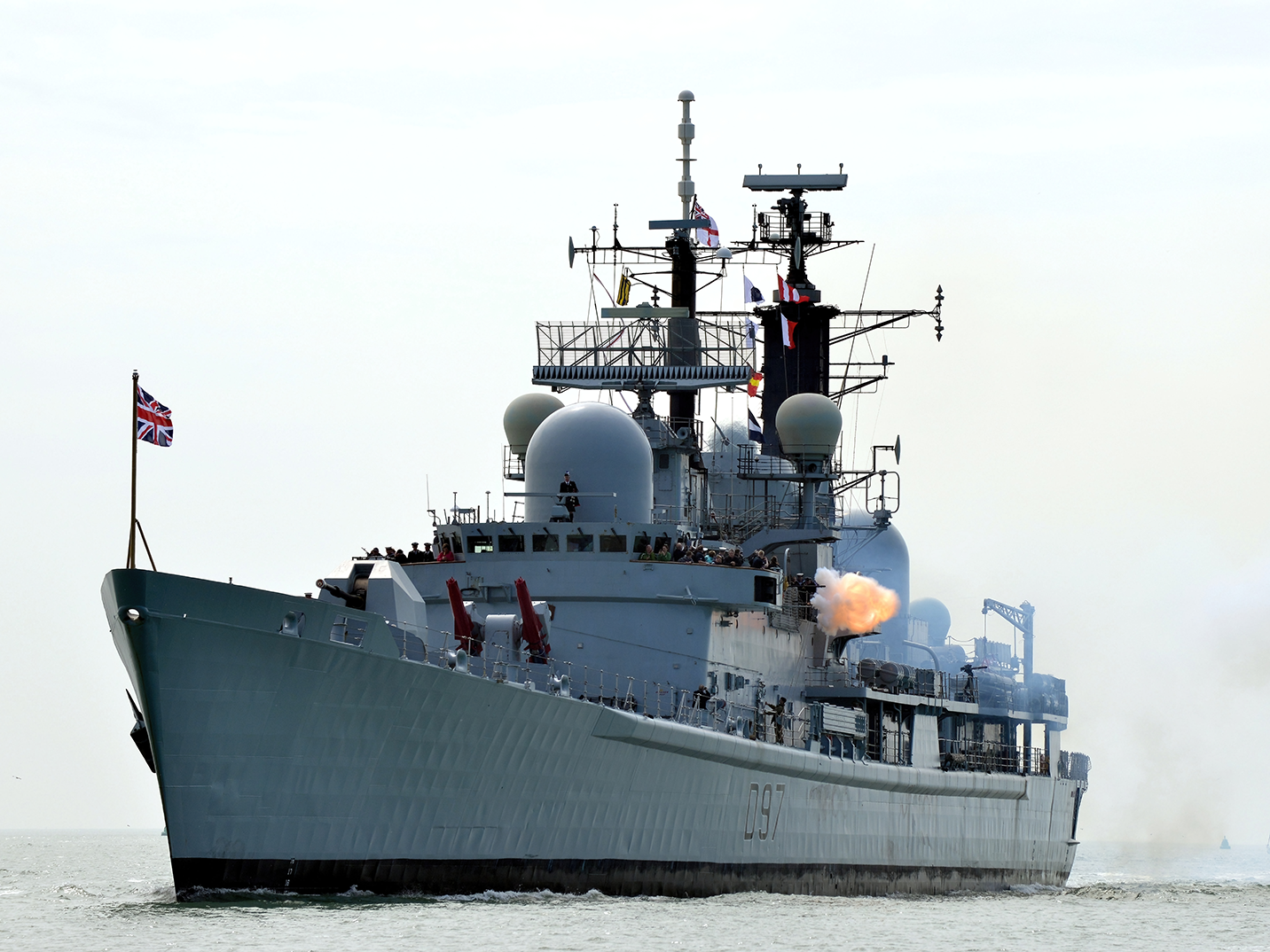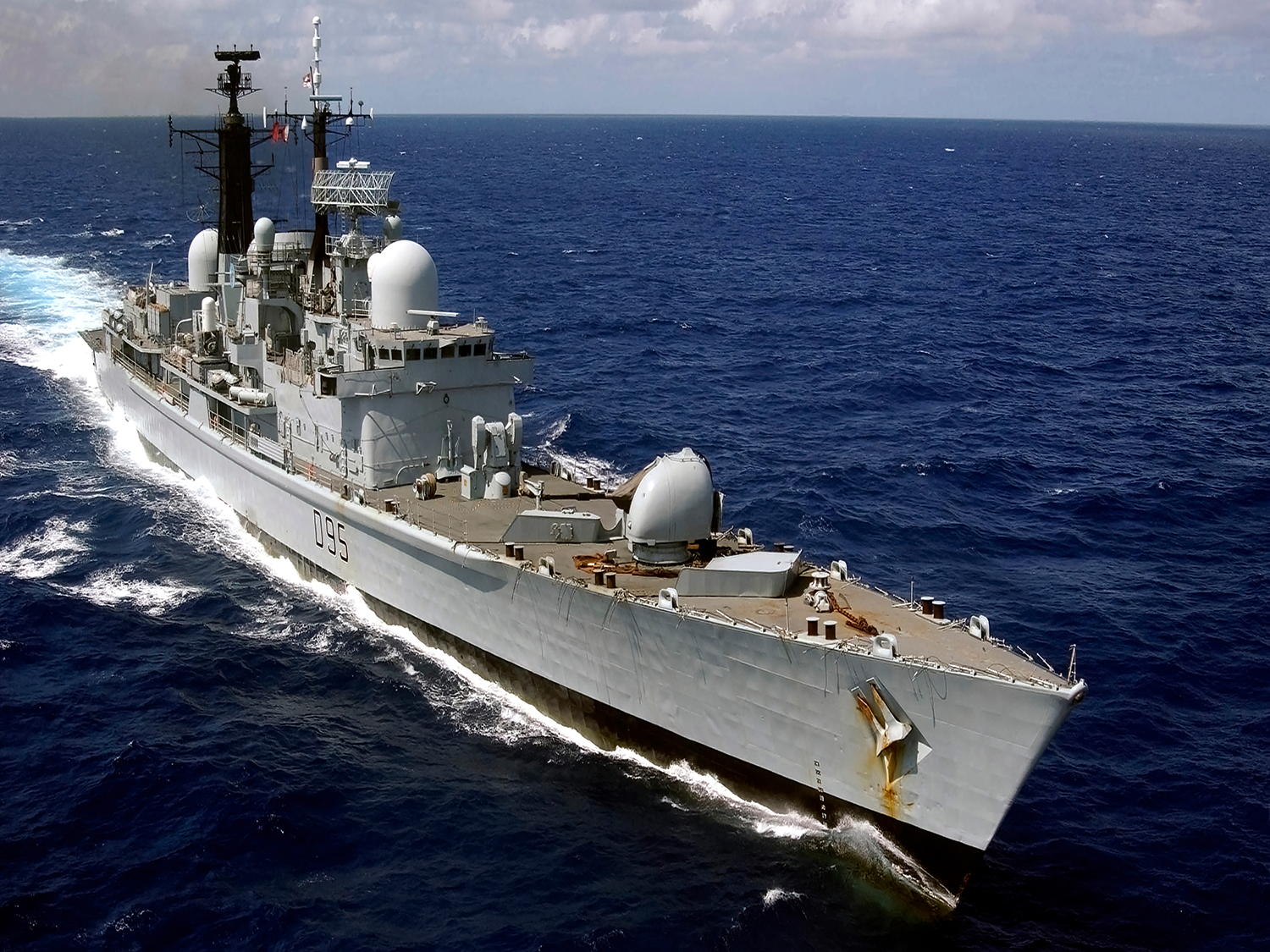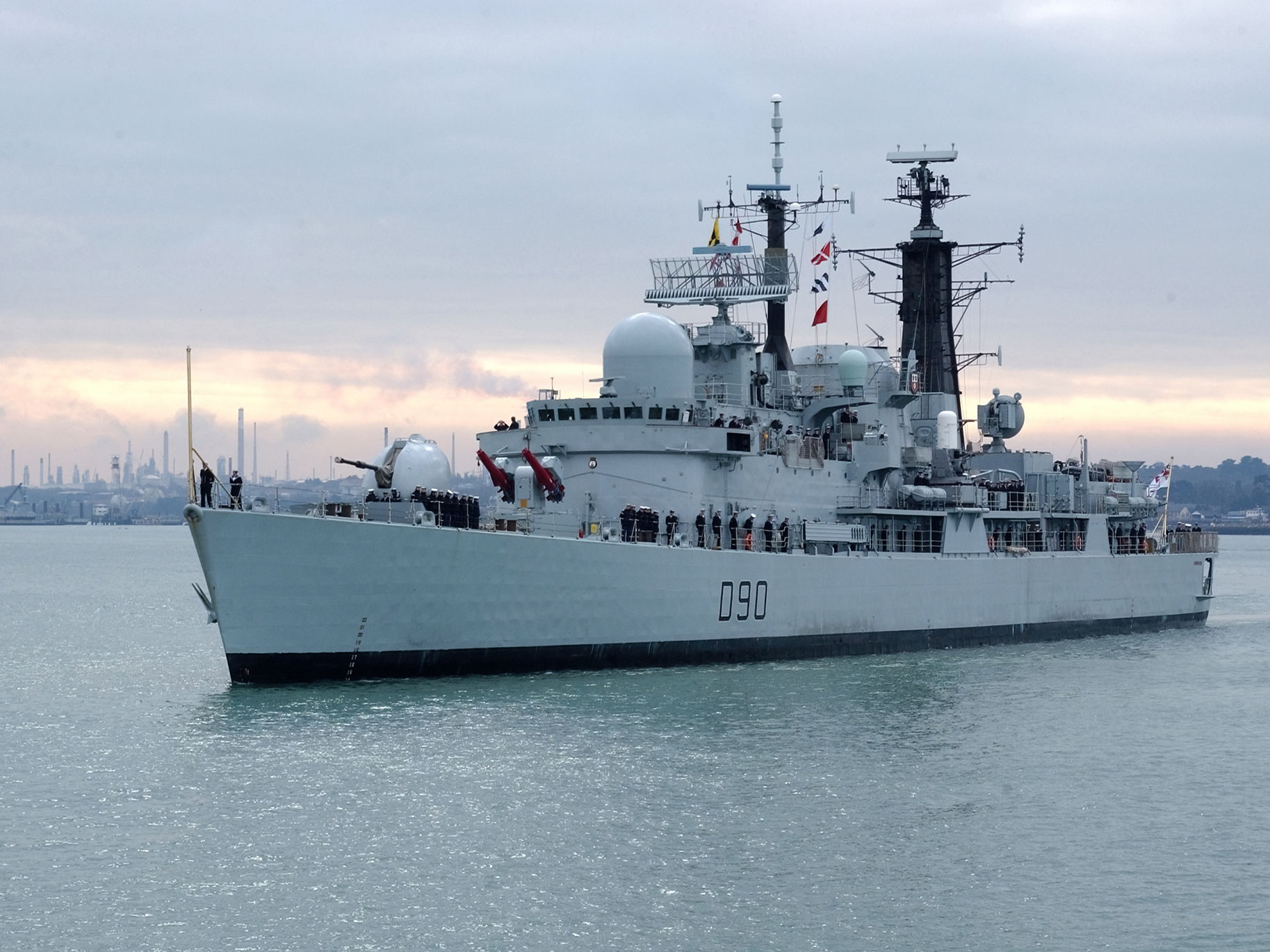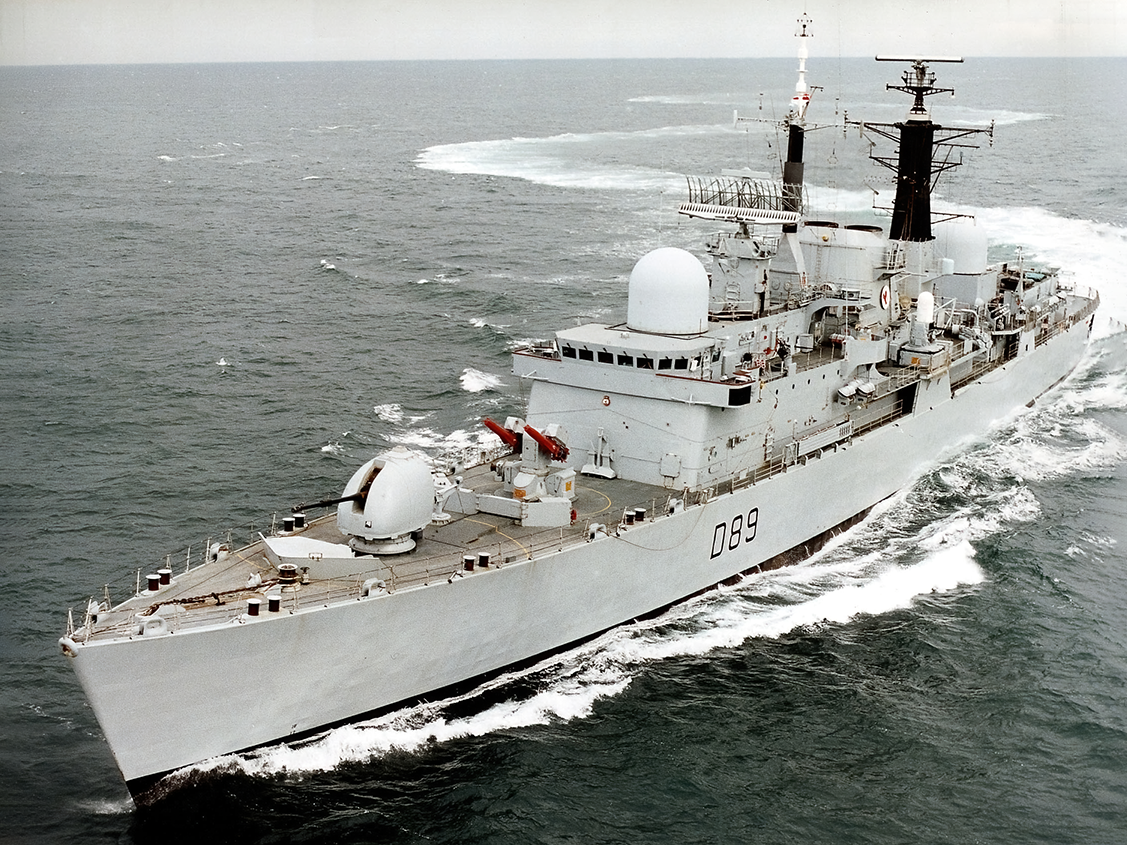Royal Navy Type 42 Destroyers: A Comprehensive Guide
Introduction
The Type 42 destroyers served as the Royal Navy’s dedicated air defence ships from the mid-1970s until the early 2010s. Built around the Sea Dart missile system, they were designed to protect task groups from modern fast jet and missile threats. Over three decades of service they took part in the Falklands War, Gulf operations and countless NATO and coalition deployments. With fourteen ships built across three distinct batches, the Type 42 class became one of the most recognisable symbols of the late Cold War Royal Navy.
Origins and Design Development
In the 1960s, the Royal Navy recognised the need to replace older air defence ships with a modern design capable of countering high-speed aircraft and emerging missile threats. An ambitious plan for large missile destroyers, the Type 82 class, was cancelled following the abandonment of Britain’s CVA-01 aircraft carrier programme. As a result, the Type 42 was developed as a more affordable destroyer built around the same Sea Dart surface-to-air missile system.
The resulting design was compact, displacing around 4,800 tonnes at full load with a length of 125 metres. To achieve high speeds the ships used a Combined Gas or Gas (COGOG) propulsion system, consisting of Rolls-Royce Olympus and Tyne gas turbines, giving them speeds of more than 30 knots.
The first ships, known as Batch 1, entered service in the mid-1970s. Their relatively short hulls caused seakeeping issues, so later Batch 2 and Batch 3 vessels were built with lengthened hulls and improvements in systems and accommodation.
Ships of the Class
A total of 14 Type 42 destroyers were built for the Royal Navy, divided into three batches:
Batch 1 (short hull): HMS Sheffield, HMS Birmingham, HMS Glasgow, HMS Newcastle, HMS Coventry, HMS Cardiff.
Batch 2 (lengthened hull): HMS Exeter, HMS Southampton, HMS Liverpool, HMS Nottingham.
Batch 3 (stretched hull): HMS Manchester, HMS Gloucester, HMS Edinburgh, HMS York.
Falklands War Service
The Falklands War in 1982 defined the Type 42 class and brought them to the world’s attention.
HMS Sheffield became the first British warship sunk in action since the Second World War when she was hit by an Argentine Exocet missile.
HMS Coventry was lost after being struck by multiple bombs while defending the task force.
Other ships, including HMS Exeter, HMS Glasgow and HMS Cardiff, successfully used their Sea Dart missiles to destroy enemy aircraft.
The conflict highlighted both the strengths of the Sea Dart system and the vulnerabilities of the compact destroyers when faced with massed low-level air attack.
Post-Falklands Service
After 1982 the surviving Type 42 destroyers continued to serve worldwide, from the Persian Gulf to the South Atlantic. They took part in convoy escort operations during the Iran–Iraq War, formed part of the multinational coalition during the Gulf War in 1991, and later supported operations in the Balkans, Iraq and Libya.
Upgrades during their service lives included improved radars, modernised electronic warfare suites, and the addition of close-in weapon systems such as Phalanx or Goalkeeper to counter anti-ship missiles. Despite their compact size and limitations, they proved versatile and reliable for decades.
Technical Features
Key features of the Type 42 destroyers included:
Displacement: Approximately 4,800 tonnes full load.
Length: 125 metres (later batches lengthened for better seakeeping).
Propulsion: Combined Gas or Gas (COGOG) system with Olympus and Tyne gas turbines, providing speeds over 30 knots.
Primary Armament: Sea Dart missile system with twin-arm launcher and up to 38 missiles.
Gun Armament: 4.5-inch Mark 8 naval gun.
Secondary Weapons: Close-range systems including Phalanx CIWS in later years.
Helicopter Facility: Hangar and flight deck for a Lynx helicopter, adding anti-submarine and surface strike capability.
Legacy and Replacement
The Type 42 destroyers served the Royal Navy for nearly four decades, forming the core of its air defence capability throughout the Cold War and beyond. Their sacrifices during the Falklands War, especially the loss of Sheffield and Coventry, highlighted the dangers of naval warfare in the missile age.
By the 2000s the ships were increasingly outdated, and the modern Type 45 Daring class destroyers were built to replace them. The last Type 42, HMS Edinburgh, was decommissioned in 2013, bringing the class’s long service to an end.
Despite their eventual retirement, the Type 42s remain remembered as the Royal Navy’s workhorses of the late twentieth century, combining affordability with effectiveness in roles across the globe.
Summary – At a Glance
|
Ship |
Commissioned |
Batch |
Notable Service Highlights |
Fate |
|
HMS Sheffield (D80) |
1975 |
Batch 1 |
Falklands War, sunk by Exocet missile |
Lost 1982 |
|
HMS Birmingham (D86) |
1976 |
Batch 1 |
Cold War service, Atlantic patrols |
Decommissioned 1999 |
|
HMS Glasgow (D88) |
1977 |
Batch 1 |
Falklands War, South Atlantic patrols |
Decommissioned 2005 |
|
HMS Newcastle (D87) |
1978 |
Batch 1 |
Cold War service, Gulf deployments, NATO operations |
Decommissioned 2005 |
|
HMS Coventry (D118) |
1978 |
Batch 1 |
Falklands War, sunk during air attack |
Lost 1982 |
|
HMS Cardiff (D108) |
1979 |
Batch 1 |
Falklands War, Gulf War, NATO operations |
Decommissioned 2005 |
|
HMS Exeter (D89) |
1980 | Batch 2 |
Falklands War, Gulf War, global deployments |
Decommissioned 2009 |
|
HMS Southampton (D90) |
1981 |
Batch 2 |
Gulf operations, NATO deployments, disaster relief missions |
Decommissioned 2009 |
|
HMS Liverpool (D92) |
1982 |
Batch 2 |
Gulf War, Libya operations in 2011 |
Decommissioned 2012 |
|
HMS Nottingham (D91) |
1983 |
Batch 2 |
Worldwide deployments, grounding incident in 2002 |
Decommissioned 2010 |
|
HMS Manchester (D95) |
1982 |
Batch 3 |
Gulf War, NATO flagship, extensive deployments |
Decommissioned 2011 |
|
HMS Gloucester (D96) |
1985 |
Batch 3 |
Shot down Iraqi Silkworm missile during Gulf War |
Decommissioned 2011 |
|
HMS Edinburgh (D97) |
1985 |
Batch 3 |
Falklands guard ship, Gulf War, last in service |
Decommissioned 2013 |
|
HMS York (98) |
1985 |
Batch 3 |
Global deployments, final years before Type 45 handover |
Decommissioned 2012 |
Conclusion
The Type 42 destroyers were born out of budget constraints but went on to serve with distinction for nearly forty years. They proved their worth in both combat and peacekeeping operations, from the Falklands to the Middle East. While their design had limitations, the class provided the Royal Navy with a credible and enduring air defence capability until replaced by the advanced Type 45s. Their legacy is one of sacrifice, adaptability and steadfast service in a changing world.


